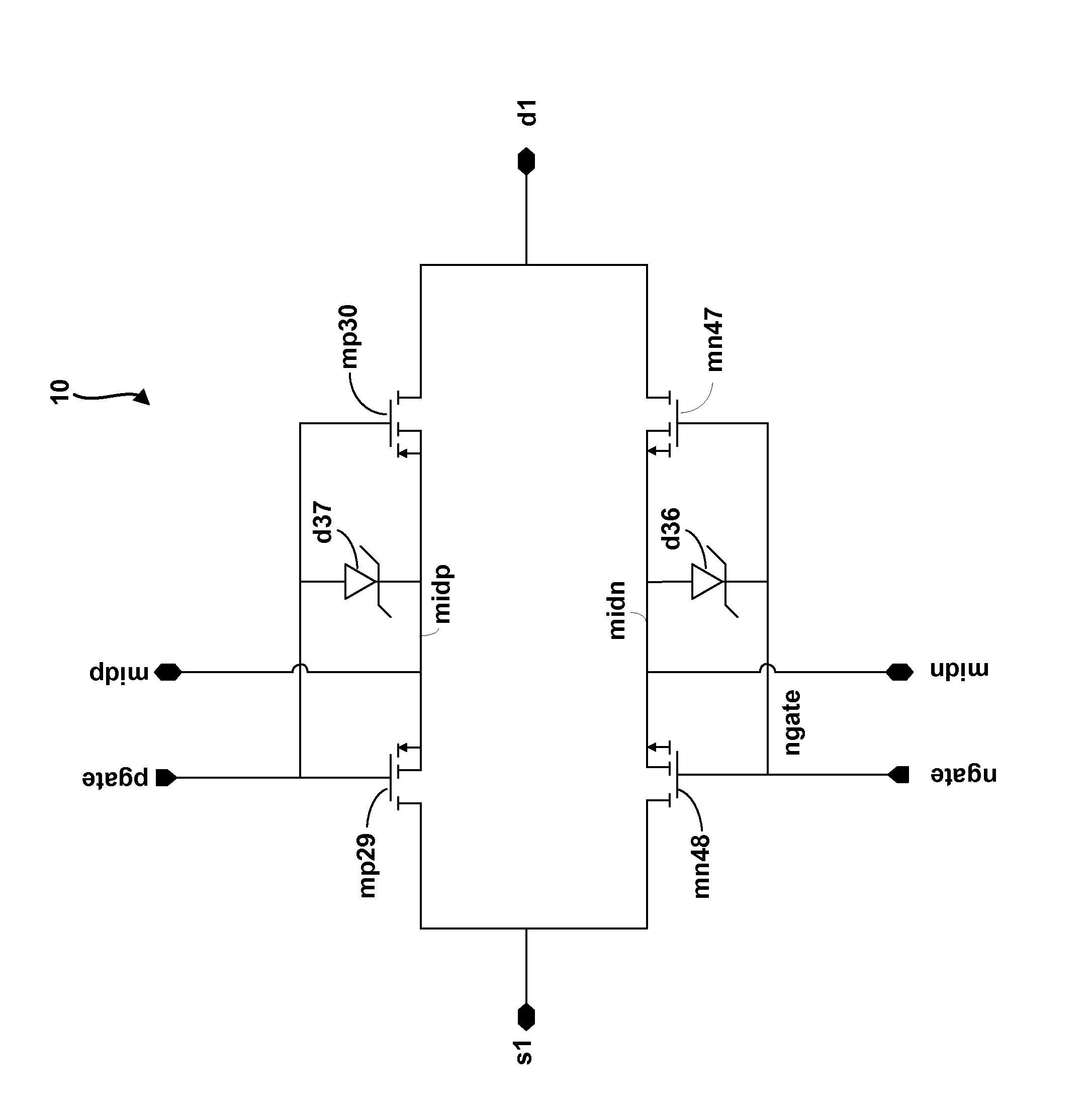Bi-directional switch using series connected n-type mos devices in parallel with series connected p-type mos devices
a series connection, mos device technology, applied in electronic switching, semiconductor devices, pulse techniques, etc., can solve the problems of inability to realize inability to achieve parallel configuration of both types of series connection, and inability to form switches. the effect of high supply current and slow switching speed
- Summary
- Abstract
- Description
- Claims
- Application Information
AI Technical Summary
Benefits of technology
Problems solved by technology
Method used
Image
Examples
Embodiment Construction
[0007]The present invention relates to a bi-directional switch that is formed using a pair of series connected N-type MOS devices connected in parallel with a pair of series connected P-type MOS devices. In one embodiment, the MOS devices are DMOS devices. The switch is capable of being operated as a rail-to-rail switch, meaning that the input to the switch can vary between the value of a positive supply rail (LHI) and the value of a negative supply rail (VSS) without adversely affecting switch operation. LHI and VSS are not shown in the drawings and represent the power supplies to a circuit that generates the input to the switch. For example, LHI and VSS may supply an amplifier circuit that boosts the voltage level of an input signal before the input is sent to the switch.
[0008]FIG. 1 shows a schematic of a DMOS switch 10 according to an example embodiment of the present invention. The switch 10 includes a pair of series connected PDMOS devices mp29 / mp30 and a pair of series connec...
PUM
 Login to View More
Login to View More Abstract
Description
Claims
Application Information
 Login to View More
Login to View More - R&D
- Intellectual Property
- Life Sciences
- Materials
- Tech Scout
- Unparalleled Data Quality
- Higher Quality Content
- 60% Fewer Hallucinations
Browse by: Latest US Patents, China's latest patents, Technical Efficacy Thesaurus, Application Domain, Technology Topic, Popular Technical Reports.
© 2025 PatSnap. All rights reserved.Legal|Privacy policy|Modern Slavery Act Transparency Statement|Sitemap|About US| Contact US: help@patsnap.com


